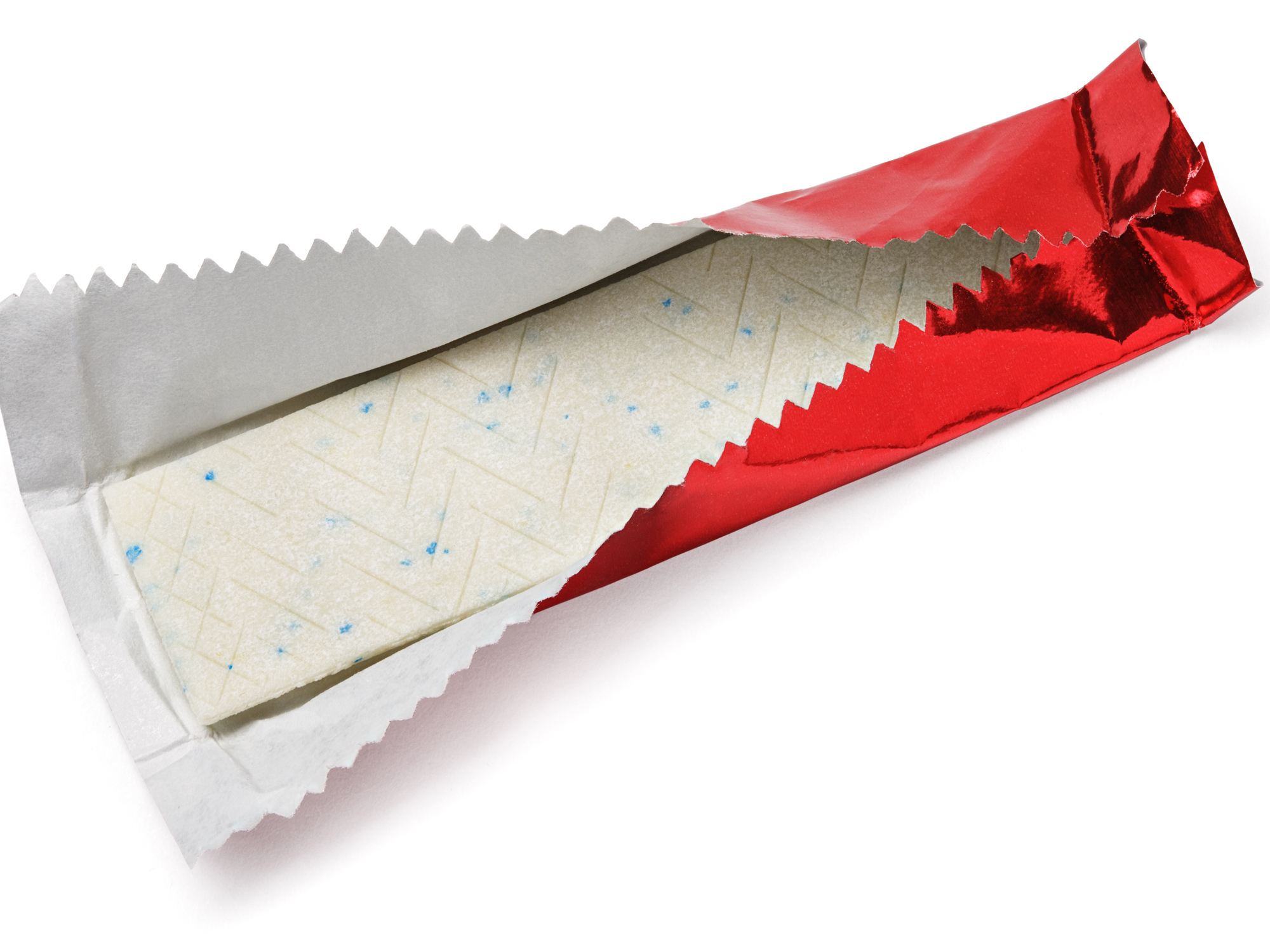Get Easy Health Digest™ in your inbox and don’t miss a thing when you subscribe today. Plus, get the free bonus report, Mother Nature’s Tips, Tricks and Remedies for Cholesterol, Blood Pressure & Blood Sugar as my way of saying welcome to the community!
The carcinogens hiding in your chewing gum

Our earliest ancestors ate because they needed food in order to survive. Chances are they didn’t think much about how good it tasted.
Still, they actually had a highly developed sense of taste. That’s so they could detect poisons and not eat them, increasing their chances of survival.
Today, although our sense of taste takes up more brain space than any other sensory experience, we’re not nearly as good as our ancestors were at knowing if our food is bad for us.
We let good taste overrule good judgment, and eat a diet of processed foods and sugar that causes all sorts of diseases.
The bigger problem, though, is lack of information.
You wouldn’t knowingly eat food with cancer-causing chemicals in it, would you? Of course not!
That is, if someone actually told you the chemical was in there.
Lucky for us, we have a government agency to warn us about dangerous chemicals in our food. That is, when they do their job.
The bad news is that this government watchdog often sides with the producers of chemicals, rather than with us, the consumer.
Recently, though, a group of scientists and consumer advocates came together to fix one small piece of this problem.
Artificial flavors: hiding in plain sight
Have you ever heard of benzophenone or ethyl acrylate? How about myrcene or pulegone?
I didn’t think so. Yet there’s a decent chance you’ve been eating these chemicals. If you enjoy the flavors of cinnamon or mint, you almost surely have.
So why have you never seen these names on a food package?
Because the FDA, our protector against poison in our food, has provided a loophole for manufacturers that allows them to sneak these chemicals into our food undetected.
The makers of new flavors, sweeteners, and other ingredients can apply to the FDA to have these chemicals approved as food additives. Or, they can go another route and deem their own ingredients to be “generally recognized as safe,” or GRAS.
There isn’t a really clear rule about which way to go. But the point is that a chemical company can do a self-review and tell the world that their artificial flavor is safe.
Kind of like believing a thief who promises they’ll never steal again, and letting them out of jail.
Consumer groups take FDA to task
The result for us as consumers is that we can be eating cancer-causing chemicals and not know it.
As Erik Olson puts it, “It’s all secret. You can’t pick up ice cream or chewing gum or baked goods and have any idea what chemicals are in there.”
Olson is from the Natural Resources Defense Council, one of ten consumer and health groups who submitted a petition to the FDA containing research which proved that six artificial flavorings, in particular, are carcinogenic.
As a result, manufacturers have been given two years to rid their products of the four chemicals mentioned above, as well as eugenyl methyl ether and pyridine.
While this is good news, it doesn’t mean we’re in the clear.
New chemical additives that are potentially toxic and carcinogenic can still go through the GRAS process and replace these six as the new poisons on the block.
And, if the FDA’s attitude is any measure, it won’t be long before that happens.
Read: 5 serious health risks from chewing gum
Here is what they had to say on the matter:
“Although we are amending our food additive regulations for these synthetic flavoring substances in accordance with the Delaney Clause, the FDA’s rigorous scientific analysis has determined that they do not pose a risk to public health under the conditions of their intended use.”
The Delaney clause of the Federal Food, Drug, and Cosmetic Act of 1938 states that the FDA cannot legally approve the use of any food additive that has been found to induce cancer in humans or animals in any dose.
So, they’re complying with the law to stay out of trouble. But they still believe these chemicals are safe for us to consume.
How to avoid artificial flavorings
Clearly, the best way to avoid artificial flavorings and other toxic chemicals in your food is to eat a fresh, whole food diet that’s free of processed foods.
And sweeteners are not the only artificial ingredients you need to be concerned about. Here are seven others, and some tips on how to avoid them.
What else can you do? A periodic detox will help rid your system of poisons.
My colleague Dr. Isaac Eliaz offers some guidelines for effective cleansing using food and supplements.
Chlorophyll can help support your liver in its efforts to cleanse the body of toxins.
Editor’s note: Discover how to live a cancer prevention lifestyle — using foods, vitamins, minerals and herbs — as well as little-known therapies allowed in other countries but denied to you by American mainstream medicine. Click here to discover Surviving Cancer! A Comprehensive Guide to Understanding the Causes, Treatments and Big Business Behind Medicine’s Most Frightening Diagnosis!
Sources:
- FDA Removes 7 Synthetic Flavoring Substances from Food Additives List — U.S. Food and Drug Administration
- Food Additive Regulations; Synthetic Flavoring Agents and Adjuvants — Federalregister.gov
- Artificial flavors in food: what are they and should you avoid them? — 80 Twenty Nutrition
- Advocates Sue FDA to Force Decision on Cancer-Causing Chemicals in Popular Foods — Center for Food Safety













